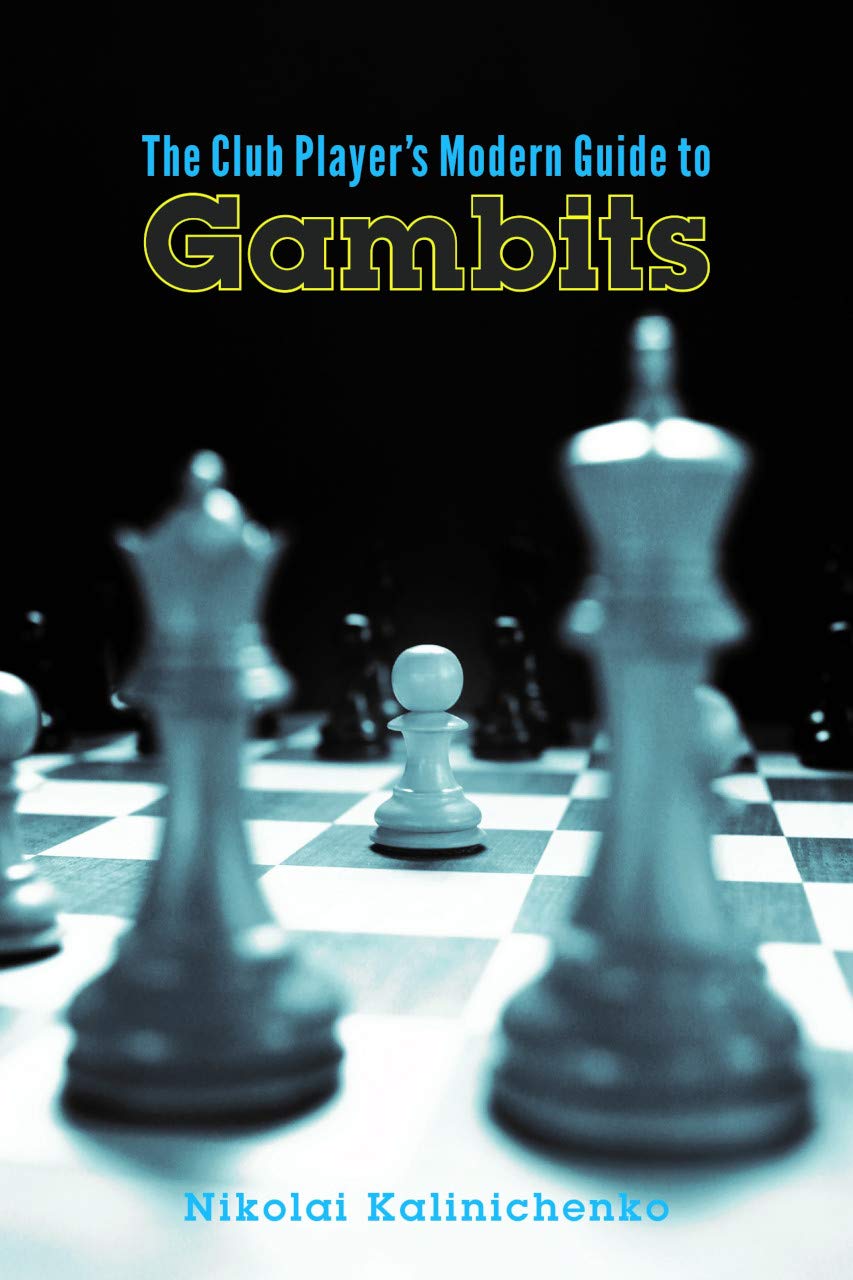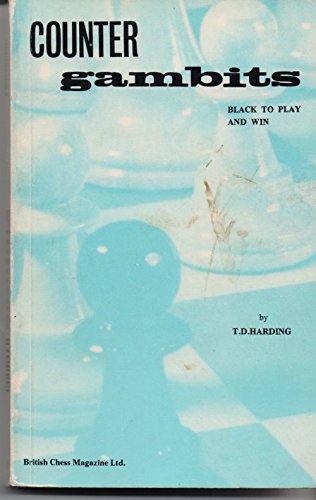
The Club Player’s Modern Guide to Gambits : Nikolai Kalinichenko
Nikolai Kalinichenko is an ICCF (correspondence) grandmaster and renowned theoretician.He has published no less than 50 books on various chess aspects in Russia, Germany, France, Spain, the U.K., USA, China and other countries. His most acclaimed English-language titles include “Vassily Ivanchuk: 100 Selected Games”; “A Positional Opening Repertoire for the Club Player”; “An Aggressive Opening Repertoire for the Club Player”; and “King’s Gambit”
This is an unusual book : the theme is sacrificing a pawn (or more) in the opening for various types of compensation such as initiative, development, control of squares or perhaps simply surprise !
Those with long memories will recall the diminutive Counter Gambits by Tim Harding published by British Chess Magazine in 1974.

This new book could be seen (to some extent) as a successor to the above and details forty eight or so opening pawn sacrifices for both Black and White organised along the following lines :
- Open Games – White Gambits
- Open Games – Black Gambits
- Semi-open Games – White Gambits
- Semi-open Games – Black Gambits
- Closed Games – White Gambits
- Closed Games – Black Gambits
- Opening Variations Featuring Material Imbalances
Here is an excerpt from the publisher, Russell Enterprises, Inc. :
This is no ordinary opening book. This practical guide describes only such openings in which White or Black sacrifices material at an early stage of the game. They are called gambits (in Old Italian, gambetto means tripping).
The justification for such sacrifices can differ quite a lot. In most cases, the side that sacrifices material tends to get ahead of the opponent in development and/or opens lines to attack the enemy king. However, there are also gambits aimed at the occupation of the center (Blumenfeld Gambit), depriving the opponent of castling (Cochrane Gambit or Traxler Variation), weakening the opponent’s pawn structure (Anti-Moscow Variation), luring an opponent’s piece to an unfavorable position (sacrificing the b2-pawn), obtaining a certain positional compensation (Volga Gambit), etc.
Gambits are often associated with the romantic chess of the 19th century. Indeed, that was the heyday of such sharp openings as the King’s Gambit or Evans Gambit, but even nowadays, many games begin with one of the well-known or even innovative gambits. This should come as no surprise: gambits help to reveal the true essence of chess, “the triumph of spirit over matter.”
The concept of this book is to examine practical games and give theoretical insights in the notes rather than in stand-alone articles. Practice has shown this to be the most effective way of mastering new material. More often than not, recent games by the world’s top players have been chosen as an illustration, played in the last few years in particular. However, the most important classic games are mentioned as well. The present book analyzes almost 50 of the major gambit lines and systems. Almost 140 games are given in full, with many game fragments selected to illustrate the important deviations. And there is a special section about types of sacrificial themes, such as sacrificing the b2-pawn, sacrificing on f7, etc.
Readers who may wish to employ one of the examined gambit variations on a regular basis should, no doubt, study the specific books on that very opening, although in most cases the lines and ideas given are sufficient for a beginner or club player to include the system in his or her opening repertoire and give it a try.
One of the features of this book (which is a little unsual these days) is a potted history of each gambit, how it got its name and some idea of early adopters. This is most welcome.
For each gambit the author provides detailed analysis (which has been engine checked) plus from two to five illustrative games (usually) between strong players with copious notes.
Almost all (probably 90%) of the gambits are lines played at serious tournament level, possibly more likely in games with shorter times control and on-line where anything goes. Of the 48 probably only perhaps 3-4 would be considered suitable for the coffee-house or following a visit to the bar! These might be the Englund Gambit, The Latvian Gambit and the Blackmar-Deimer Gambit but don’t tell Tim Sawyer or any other BDG fan !
Amongst the most sound we have :
The Geller, Morra, Evans, Marshall (in the Ruy Lopez), Marshall (in the Semi Slav), Icelandic, Benko, Blumenfeld, Volga, From, Winawer Counter, Staunton, Albin Counter, Budapest, von Hennig-Schara, Krause (in the Slav) and Botvinnik gambits with the balance falling somewhere in between.
We were surprised not to find coverage of the Elephant (Queen’s Pawn Counter) gambit in the open games section but maybe the author considers it unsound :
We learnt a new name (The Been-Koomen Variation) for a familiar gambit :
that you might not have encountered previously.
Here is an example game that is analysed by the author but here analysed by Michael Kransekow :
So, in summary we have a book that is most suitable for club players and those perhaps looking for ideas for rapidplay or blitz games. Almost all of these gambits are considered to be “sound” (whatever this means in these engine dominated days) and most definitely practical and playable.
Snooty theoreticians might look down their noses at some choices forgetting that chess is a game (for most people) and to be enjoyed. This book is certainly not a rehash of “Unorthodox Chess Openings” by the late Eric Schiller and many of these gambit suggestions will liven up a dull repertoire.
John Upham, Cove, Hampshire 11th January 2020

Book Details :
- Softcover : 256 pages
- Publisher: Russell Enterprises (15 Oct. 2019)
- Language: English
- ISBN-10: 194127076X
- ISBN-13: 978-1941270769
- Product Dimensions: 15.2 x 1.3 x 22.9 cm
Official web site of Russell Enterprises

